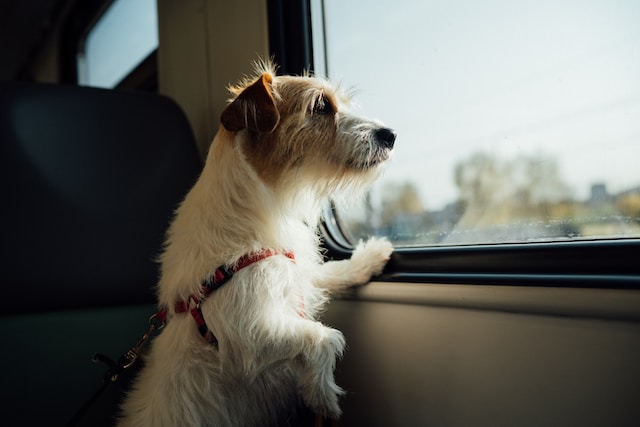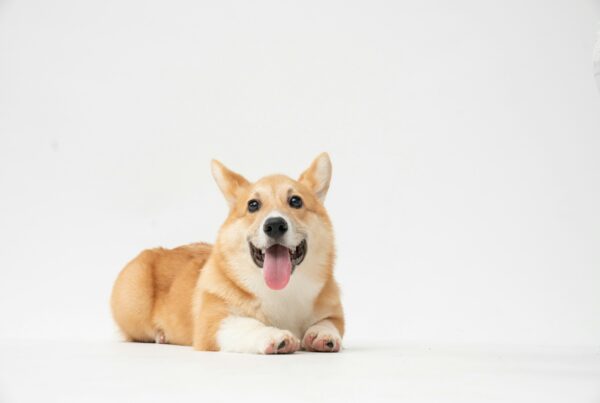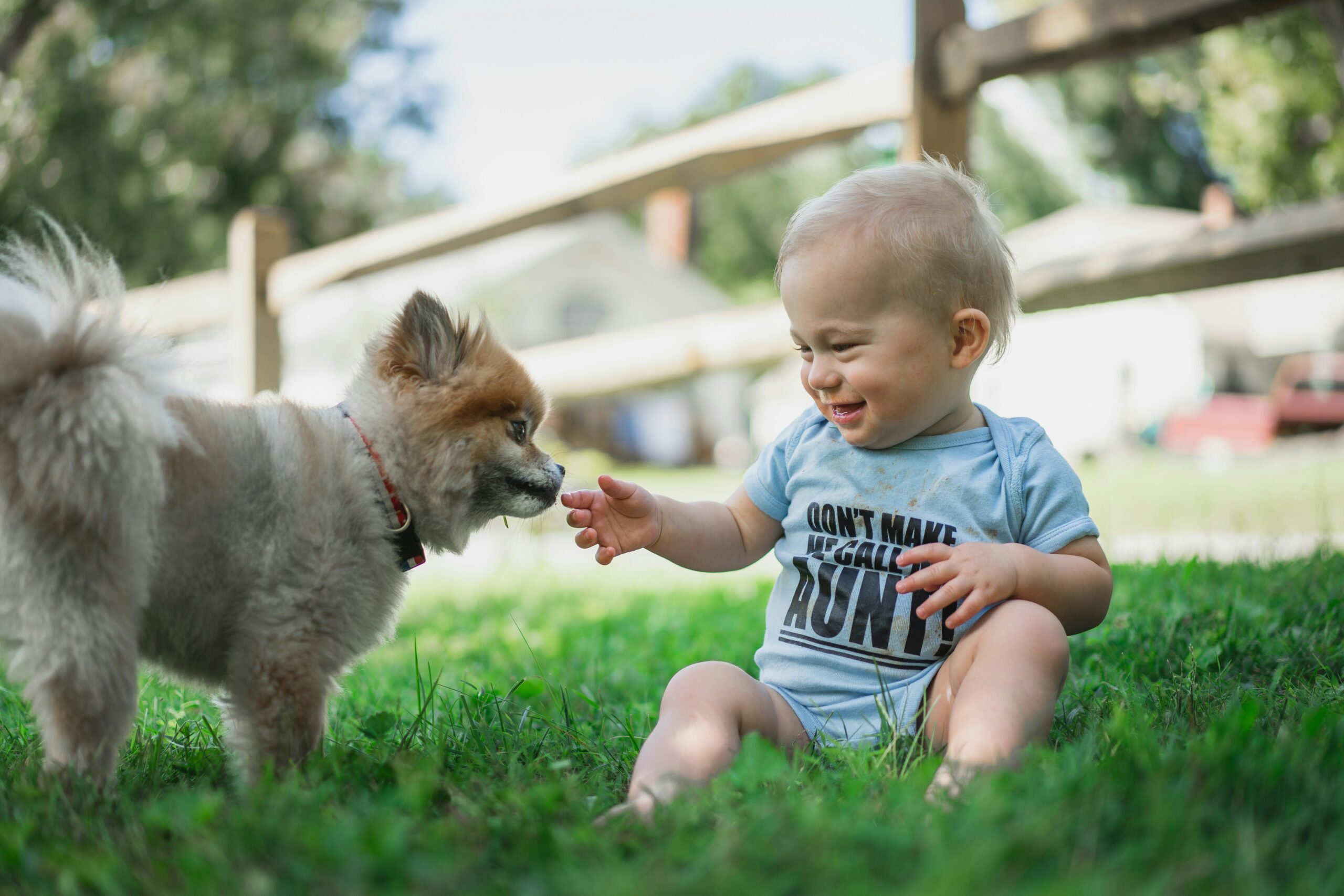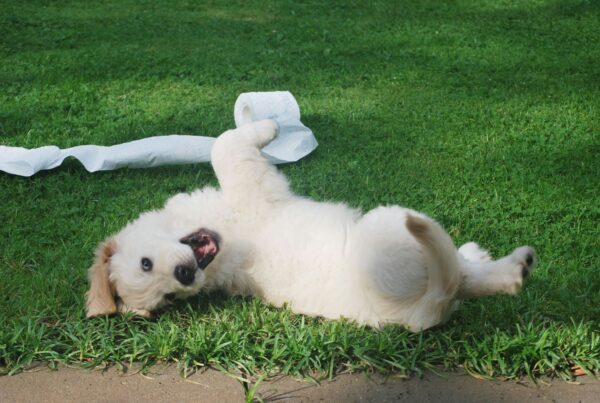Are you getting ready to move with your dog? You may have guessed this, but relocation can be distressing for dogs, as it disrupts their established routines. Our pets can have a hard time when separating them from their cherished environments. Learn about the emotional bond between dogs and their favorite spots and how to help your furry companion cope with the impending change. Saying goodbye to your dog’s favorite spots before a move is essential to the relocation, and understanding their attachment to these locations is key to a smoother transition.
Preparing Your Dog for the Move
Dogs are known for their remarkable sense of smell and memory. It’s not just about recognizing familiar faces; they can also remember specific places and fabrics, like car seats or their bed, and associate them with positive experiences. Your dog’s attachment to their favorite spots is a testament to their emotional depth and sensitivity. And moving is a hectic time filled with packing, organizing, and planning.
Amidst all the chaos, it’s crucial not to overlook your dog’s emotional needs. Preparing your dog for the move involves creating a sense of security and minimizing stress, and here’s how to do it:
- Maintain a Routine While Packing and Planning: Your dog’s daily routine should stay the same while you’re planning a move. Also, staying close to your dog during the preparations will help your pet avoid unnecessary stress.
- Gradually Introduce the Idea of Change: You should try to ease your dog into the idea of moving. This means you should let it see other spots in the city and maybe get new toys. You can introduce your dog to packing materials a few days before you start packing so the smell and noise from the materials don’t bother them as much.
- Ensure Your Dog Feels Secure Throughout the Process: Your pet will need extra affection and attention during this period. You can use familiar blankets, bedding, and toys to make your dog feel safe.
Ways of Saying Goodbye to Your Dog’s Favorite Spots Before a Move
Consider the following steps to help your furry friend navigate this emotional process.
Spend Time in Their Favorite Places
Prioritize spending quality time with your dog in their favorite spots. If your dog has a particular corner of the backyard they love, take some extra time there with them. If their favorite sunbeam spot by the window holds a special place in their heart, bask in the sunlight together. Engaging in activities they love in these locations can create positive associations with those spots and make the goodbye process less daunting.
Capturing Memories with Photos and Videos
When saying goodbye to your dog’s favorite spots before a move, preserve the memories by taking photos and videos. These souvenirs can be a source of comfort in your new home. Capture the moments when they’re happily playing, napping, or enjoying their beloved locations. These visual memories will be a touching reminder of your bond with your furry companion and the special places you’ve shared.
Expressing Your Love and Reassurance
Throughout this transitional phase, it’s essential to shower your dog with love and reassurance. They may sense the changes in the environment and your routines, so extra affection can help ease their anxiety. Spend time petting, cuddling, and engaging in their favorite activities. Your emotional support and presence will give your dog a sense of security and reassurance during this period of change.
Tips for Making the Transition Easier
Moving to a new home can be a significant disruption for both you and your dog. To make this transition as smooth as possible, consider the following tips:
Establishing Familiar Spots in Your New Home
After saying goodbye to your dog’s favorite spots before a move, one of the first steps you can take when you arrive at your new residence is to recreate familiar spots for your dog. Dogs find comfort in the familiar, so place their bed, toys, and other beloved items in designated areas within your new home. Creating these familiar spaces gives your dog a sense of continuity and security, which can help them adjust more easily to the new environment.
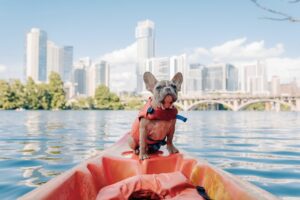
Create a sense of security and minimize stress for your dog.
Keeping a Consistent Routine
Dogs thrive on routine and predictability. Amidst the changes of moving, maintain your dog’s regular schedule as closely as possible. Continue feeding them at the same times, taking them for walks as you normally would, and engaging in playtime or cuddling consistently. Consistency in routine provides a stabilizing influence for your dog and helps them adapt more quickly to their new surroundings.
Maintaining your dog’s daily routine is crucial during a move, ensuring stability and comfort. However, during a relocation with your dog, it can be challenging to balance your pet’s needs with the logistics of the move. For example, if you are making a long distance move, like moving from Florida to New York, hiring professional moving services can be incredibly convenient.
The Role of Patience and Reassurance
Transitioning to a new home can be puzzling for dogs, and they may exhibit signs of anxiety or confusion. It’s important to be patient and understanding during this period. Your dog may need extra reassurance and comfort, so be prepared to offer it. Spend quality time with your pet, engage in gentle play, and provide soothing words and physical affection to reassure them. Your calm and reassuring presence can go a long way in easing their anxiety and helping them settle into the new environment.
Tips for Handling Your Dog’s Anxiety During the Move
Moving with your dog can be an emotionally charged experience, and it’s important to remember that dogs can also experience anxiety and stress during the transition. This section will explore practical tips for handling your dog’s anxiety during the move, ensuring their well-being, and helping them adapt to the changes.
- Observe and Acknowledge Your Dog’s Anxiety: Dogs can manifest anxiety in various ways, such as excessive panting, whining, pacing, or changes in appetite. It’s crucial to be attentive to these signs and acknowledge your dog’s emotions. Once you recognize anxiety, you can take steps to alleviate it and make your dog more comfortable.
- Create a Safe Space: Designate a quiet and secure area for your dog during the move. This could be a room with their bed, toys, and water where they can retreat when things get too overwhelming. Ensure this space remains accessible and undisturbed amidst the chaos of packing and loading.
- Maintain Familiar Smells: Dogs find comfort in familiar scents. Keep their bedding, blankets, and toys unwashed until you’ve settled into your new home. These familiar smells can provide security during the move and in the new environment.
- Stay Calm and Relaxed: Moving can be a stressful experience, but AmeriSafe Moving Services offers a solution. Renowned for their expertise in facilitating smooth and hassle-free relocations, they provide tailored moving solutions that cater to individual needs. From their years of experience relocating dogs and their owners, they emphasize the importance of maintaining a calm demeanor, especially when pets are involved. Dogs, in particular, are highly sensitive to their owners’ emotions—if you’re stressed and anxious during the move, your dog will likely sense it and become uneasy.
Stick to the Routine
Consistency is key for dogs, especially during times of change. Stick to their regular feeding, walking, and playtime schedule as closely as possible. Maintaining a routine provides a sense of stability and normalcy for your dog.
Use Calming Techniques
Consider using calming techniques and products, such as pheromone diffusers, anxiety wraps, or calming supplements. You can consult your veterinarian for recommendations on products that may help alleviate your dog’s anxiety.
Settling into Your New Home with Your Dog
Once you’ve successfully managed your dog’s anxiety during the move, the next step is helping them settle into your new home. Discover some strategies to ensure a smooth transition and make your dog feel comfortable in an unfamiliar environment.

Gradually introduce your dog to the new home.
- Take Short Breaks: If you’re traveling a long distance, plan for regular breaks during the journey to allow your dog to stretch their legs, relieve themselves, and drink water. These breaks can help break up the monotony of travel and reduce stress.
- Introduce the New Home Gradually: When you arrive at your new home, gradually introduce your dog to the new environment. Start with one room and gradually expand their access as they become more comfortable. Be patient and allow your dog to explore at their own pace.
- Recreate Familiar Spots: As you unpack and settle into your new home, recreate your dog’s favorite spots from your previous residence. Place their bed, toys, and familiar items in these areas to help them feel at home.
- Stay Close and Provide Comfort: During the first few days in your new home, spend extra time with your dog. Offer comfort, cuddles, and playtime to reassure them. Your presence and attention can help alleviate their anxiety and establish a positive association with the new place.
- Seek Professional Help if Needed: If your dog’s anxiety persists or worsens, consult a professional dog trainer or behaviorist. They can provide guidance and strategies tailored to your dog’s specific needs.
Conclusion
Moving with your pet involves saying goodbye to your dog’s favorite spots before a move and ensuring their emotional well-being. By observing and acknowledging your dog’s anxiety, creating a safe and familiar space, and maintaining a consistent routine, you can help them handle the challenges of moving with greater ease. And remember, your calm and reassuring presence is invaluable to your dog during this time of change. With patience, understanding, and the right strategies, you and your furry friend can embark on this new adventure together, creating cherished memories in your new home.
Photos:
https://unsplash.com/photos/white-and-brown-long-coated-dog-sitting-on-car-seat-9NpaoldDYms
https://unsplash.com/photos/selective-focus-photography-of-labrador-in-vehicle-oBCT3obZ6OY
https://unsplash.com/photos/brown-short-coated-dog-on-orange-kayak-owm3TQrv6N4
https://unsplash.com/photos/white-cat-sitting-beside-gray-luggage-bag-xCmlTJmMyhQ

